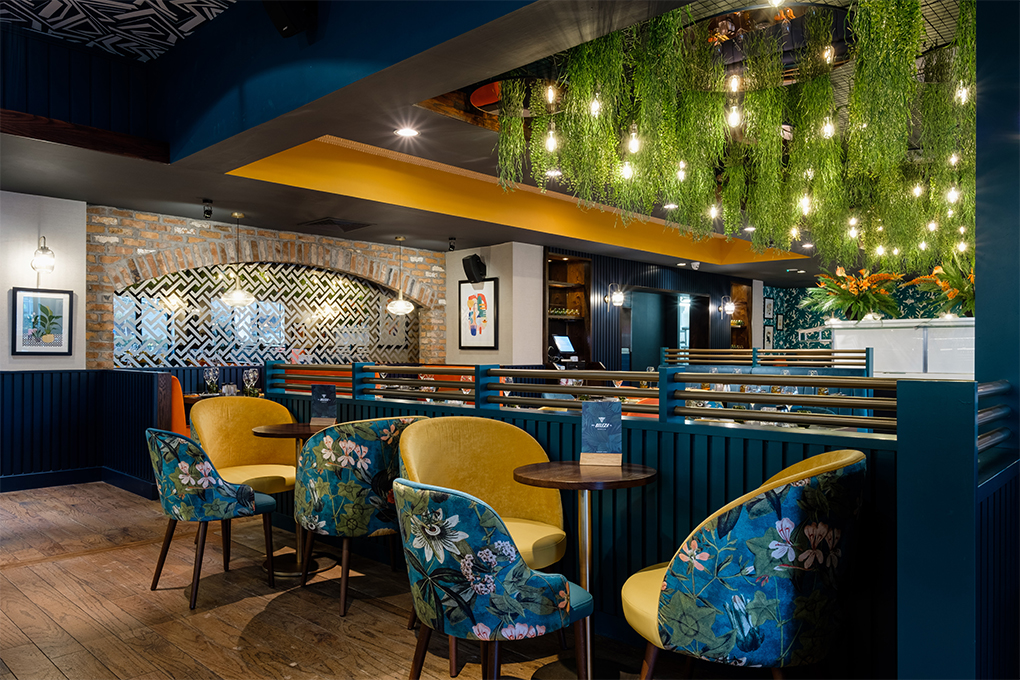When it comes to restaurant interior design, every detail contributes to the overall ambiance and customer experience. While the visual aspects of the venue often take centre stage, the importance of acoustics not be underestimated.
A survey by SoundPrint, a global app that measures noise levels, found that 80% of 1,350 London restaurants were too loud for conversation, indicating a significant oversight in their design.
Acoustics influences not only the atmosphere but also plays a crucial role in shaping how diners perceive their experience.
The Importance of ‘Noise’ in Restaurants
The sound level within a restaurant can significantly impact patrons’ enjoyment and comfort, with some studies even suggesting it can go as far as changing the taste of the food.
If it’s too loud, conversations become strained, affecting social interaction and customer satisfaction. Conversely, if it’s too quiet, the atmosphere might lack vibrancy and energy, potentially making diners uncomfortable or self-conscious.

Are Sound Levels Factored into Interior Design?
Absolutely.
Savvy restaurant designers carefully consider acoustics as part of their overall plan. This involves choosing materials, furniture, and layout configurations that can either absorb or reflect sound waves to achieve the desired ambiance.
It is also crucial to identify areas where customers who may be sensitive to loud noises, such as very young children and neurodivergent individuals, can be seated in quieter sections.
Is a Loud Restaurant a Good Thing or a Bad Thing?
The answer depends on the restaurant’s concept and target demographic. For a bustling pub or a lively tapas bar, a moderate level of noise can enhance the social atmosphere and create a sense of energy.
Conversely, fine dining establishments often aim for a quieter environment to facilitate intimate conversations and convey an air of sophistication.
How The Right Acoustic Levels Can Set The Tone For Your Brand
Sound is a powerful tool for crafting a restaurant’s atmosphere, which in turn, supports its brand identity. For instance, in a high-end restaurant, soft, ambient music and minimal background noise create an elegant and refined atmosphere. In contrast, a casual barbecue joint may thrive on the sounds of sizzling grills and lively chatter, reinforcing a laid-back, convivial vibe that resonates with its diners.
An example of this is a fine-dining restaurant in which the sound levels are too high. It wouldn’t take long before patrons got frustrated as their attention was taken away from their plate and focused on the volume of noise surrounding them. In these establishments, people want to savour and discuss the food, and a key part of the atmosphere of the restaurant is built on the sound levels and ambiance when inside. As mentioned above, playing soft, quiet music is often the perfect fit and the chosen choice for these establishments.

The Lombard Effect
The Lombard effect, a phenomenon where individuals involuntarily raise their voices in response to background noise, significantly influences the atmosphere in restaurants, particularly in busy or crowded settings.
As customers raise their voices to be heard over the ambient noise—whether it’s the chatter of other diners, clattering dishes, or music—this creates a feedback loop where the overall noise level in the restaurant increases. This, in turn, prompts others to speak even louder, amplifying the noise further and potentially creating a chaotic, less enjoyable dining experience.
While some restaurants use sound-absorbing materials to mitigate this, the Lombard effect often remains a challenge in maintaining a comfortable and pleasant atmosphere, impacting both communication and overall ambiance.
Three Interior Design Choices to Help Control Sound Levels
- Acoustic Panels and Materials: Incorporating acoustic panels while fitting out the restaurant, on walls and ceilings for example, can effectively absorb sound, reducing reverberation and overall noise levels.
- Furniture Selection: Opt for upholstered seating and soft furnishings, which absorb sound rather than hard surfaces that reflect it. Additionally, consider using carpets or rugs to dampen noise in high-traffic areas.
- Layout and Dividers: Strategically placing partitions or plants can help create zones within the restaurant, managing noise levels and enhancing privacy for diners.

While visual elements often take precedence in restaurant design, acoustics play an equally crucial role in shaping the overall dining experience and brand perception.
By carefully considering the volume of noise and employing thoughtful design choices, restaurants can create environments that not only please the senses but also leave a lasting impression on their patrons.
Whether aiming for a serene dining experience or a lively social hub, the careful orchestration of sound can elevate a restaurant’s ambiance to new heights of excellence.
Since 2022, Matt has enjoyed completing countless projects for independent brands across the UK with Copper and Ash.
- The Power of Interior Design in Creating Restaurant Ambience - July 24, 2025
- 5 Restaurant Design Trends to Look Out For in 2025 - May 9, 2025
- Introducing Our Newest Designer- Chloe Patrick - April 24, 2025

